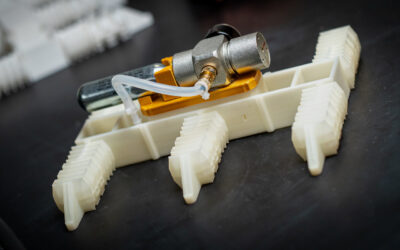Lithium (Li-ion) batteries used to power plug-in hybrid and electric vehicles show overall promise to “fuel” these vehicles and reduce greenhouse gas emissions, but there are areas for improvement to reduce possible environmental and public health impacts, according to a “cradle to grave” study of advanced Li-ion batteries recently completed by Abt Associates for the U.S. Environmental Protection Agency (EPA).
“While Li-ion batteries for electric vehicles are definitely a step in the right direction from traditional gasoline-fueled vehicles and nickel metal-hydride automotive batteries, some of the materials and methods used to manufacture them could be improved,” said Jay Smith, an Abt senior analyst and co-lead of the life-cycle assessment.
Smith said, for example, the study showed that the batteries that use cathodes with nickel and cobalt, as well as solvent-based electrode processing, show the highest potential for certain environmental and human health impacts. The environmental impacts, Smith explained, include resource depletion, global warming, and ecological toxicity—primarily resulting from the production, processing and use of cobalt and nickel metal compounds, which can cause adverse respiratory, pulmonary and neurological effects in those exposed.
There are viable ways to reduce these impacts, he said, including cathode material substitution, solvent-less electrode processing and recycling of metals from the batteries.
The study, carried out through a partnership with EPA, the U.S. Department of Energy, the Li-ion battery industry, and academicians, was the first life-cycle assessment to bring together and use data directly provided by Li-ion battery suppliers, manufacturers, and recyclers. Its purpose was to identify the materials or processes within a Li-ion battery’s life cycle that most contribute to impacts on public health and the environment, so that battery manufacturers could use this information to improve the environmental profile of their products, while the technology is still emerging. It also sought to evaluate the potential impacts of a nanotechnology innovation (i.e., a carbon nanotube anode) that could improve battery performance.
Among other findings, Shanika Amarakoon, an Abt associate who co-led the life-cycle assessment with Smith, said global warming and other environmental and health impacts were shown to be influenced by the electricity grids used to charge the batteries when driving the vehicles.
“These impacts are sensitive to local and regional grid mixes,” Amarakoon said. “If the batteries in use are drawing power from the grids in the Midwest or South, much of the electricity will be coming from coal-fired plants. If it’s in New England or California, the grids rely more on renewables and natural gas, which emit less greenhouse gases and other toxic pollutants.” However,” she added, “impacts from the processing and manufacture of these batteries should not be overlooked.”
In terms of battery performance, Smith said that “the nanotechnology applications that Abt assessed were single-walled carbon nanotubes (SWCNTs), which are currently being researched for use as anodes as they show promise for improving the energy density and ultimate performance of the Li-ion batteries in vehicles. What we found, however, is that the energy needed to produce the SWCNT anodes in these early stages of development is prohibitive. Over time, if researchers focus on reducing the energy intensity of the manufacturing process before commercialization, the environmental profile of the technology has the potential to improve dramatically.”
The life-cycle assessment results and methodology are described in detail in the EPA/Abt report, “Application of Life-Cycle Assessment to Nanoscale Technology: Lithium-ion Batteries for Electric Vehicles.” The research for the life-cycle assessment was undertaken through the Lithium-ion Batteries and Nanotechnology for Electric Vehicles Partnership, which was led by EPA’s Design for the Environment Program in the Office of Chemical Safety and Pollution Prevention and Toxics, and EPA’s National Risk Management Research Laboratory in the Office of Research and Development. The Partnership also included industry partners (i.e., battery manufacturers, recyclers, and suppliers, and other industry groups), the Department of Energy’s Argonne National Lab, Arizona State University, and the Rochester Institute of Technology.
Source: Abt Associates
















